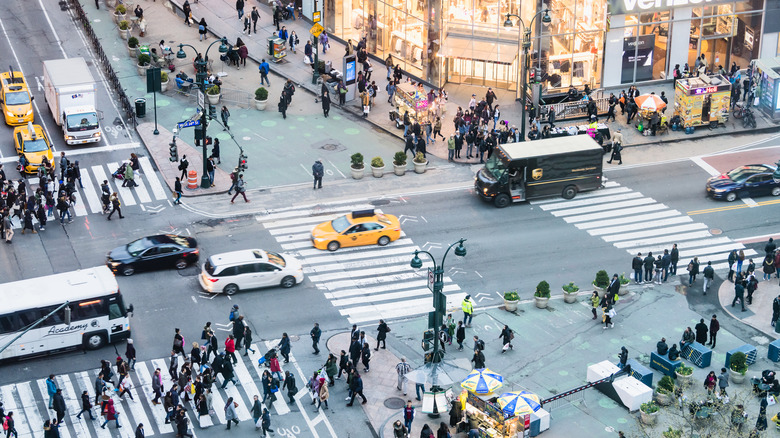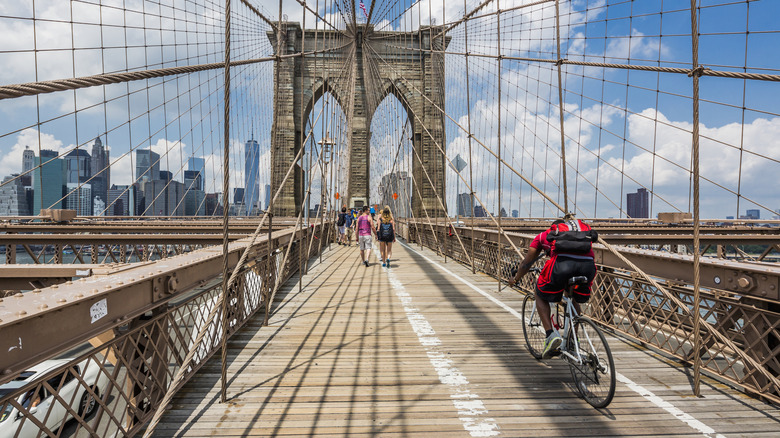America's Safest Big City For Walkers And Bikers Is A Bustling Hub Putting Pedestrians First
Some may know New York City for its world-famous shopping on the luxurious Fifth Avenue. Others know it for the scenic Central Park named the best tourist attraction in America. And in 2025, NYC earned a new distinction that may come as a surprise: It was named the safest city for cyclists and pedestrians in a study by the personal injury law firm Wagner Reese. The stereotype of bustling sidewalks and honking cars at jammed intersections that springs to mind when you think of NYC might have some truth to it, but the numbers show safety perseveres over the chaos. The city achieved the lowest fatality rate for walkers and bikers of all of the U.S. cities on the list not by pure chance, but with a series of policies implemented over the past decade, from decreased speed limits to protected walkways and bike lanes.
The Wagner Reese study looked at 290 cities across America, giving each a risk score based on fatality rates for pedestrians and cyclists, measured against state averages and general walkability and bikeability. NYC had the lowest risk score, at 5.85 out of 100, followed by Irvine (6.2) and Boston (10.35). According to data from the NYC Department of Transportation, there were 51 pedestrian deaths in the first six months of 2025 and only one non-electric bike death. If the trend holds steady, that will put NYC's pedestrian and biker fatality rate at about 1.2 deaths per 100,000 people annually. By contrast, the riskiest city in the Wagner Reese report, Baton Rouge, had a cyclist and pedestrian fatality rate of 4.7 deaths per 100,000 people for 2024, based on data from the Center for Analytics & Research in Transportation for the East Baton Rouge parish — nearly quadruple that of NYC.
What makes NYC so safe for walkers and bikers?
There's one significant program unique to New York City that plays a big role in its cyclist and pedestrian safety: the Vision Zero initiative. The initiative launched in 2014, modeled off of Swedish legislation, with the goal of eliminating traffic deaths. Since then, the city has passed a slew of new laws focused on pedestrian and cyclist safety. Among some of the changes spurred by Vision Zero, the city installed over 600 miles of protected bike lanes, lowered the citywide default speed limit, and added leading pedestrian intervals, which give pedestrians head starts at crosswalks before cars get a green light.
It also helps that, in NYC, walking is the norm. Locals are used to navigating busy intersections, sharing space with cyclists, and maintaining a second-nature awareness of the roads. Plus, with a higher volume of people sharing the sidewalks, there's actually a safety-in-numbers effect: A 2023 study published in Sustainability showed that as pedestrian volume increases in cities, the potential for pedestrian fatalities declines. So, not only is walking around the cheapest way to navigate NYC on your next vacation, but you'll be in good hands, sharing the sidewalks with experienced walkers on routes that are well-regulated. You can try biking around pretty easily, too, with Citi Bikes, a public bike sharing system that provides bicycles to rent by the minute or for the day in docking points all around the city.

